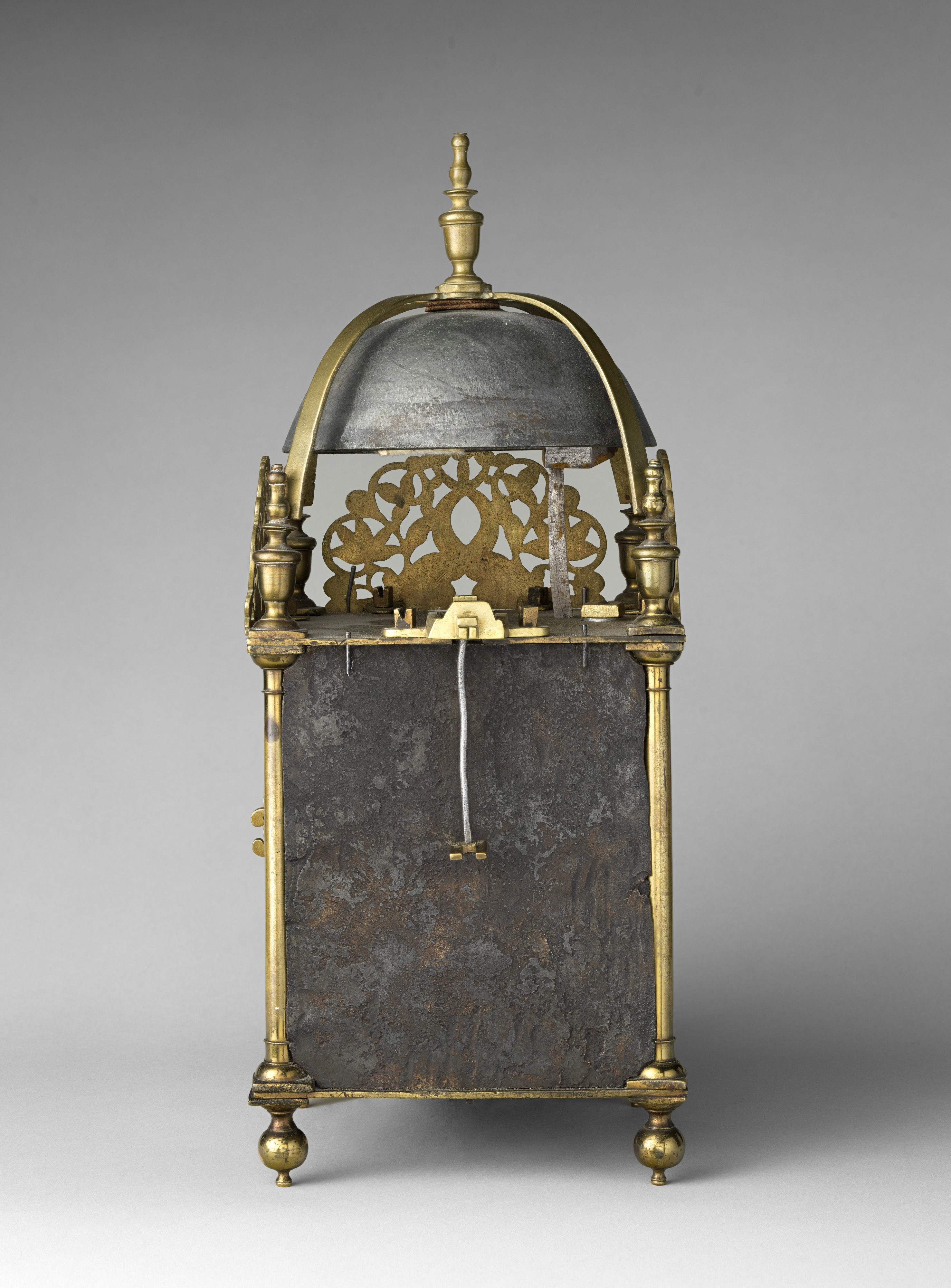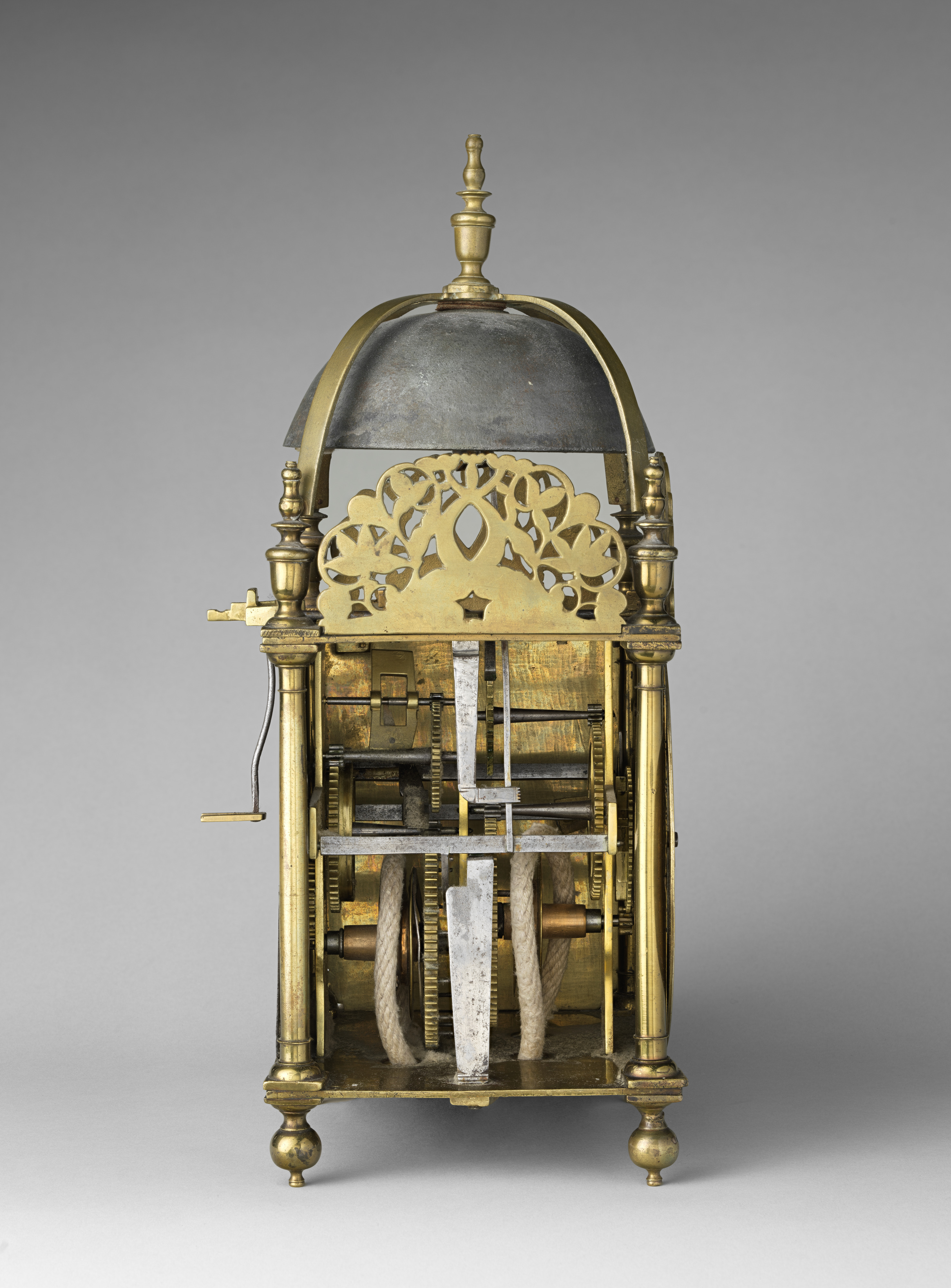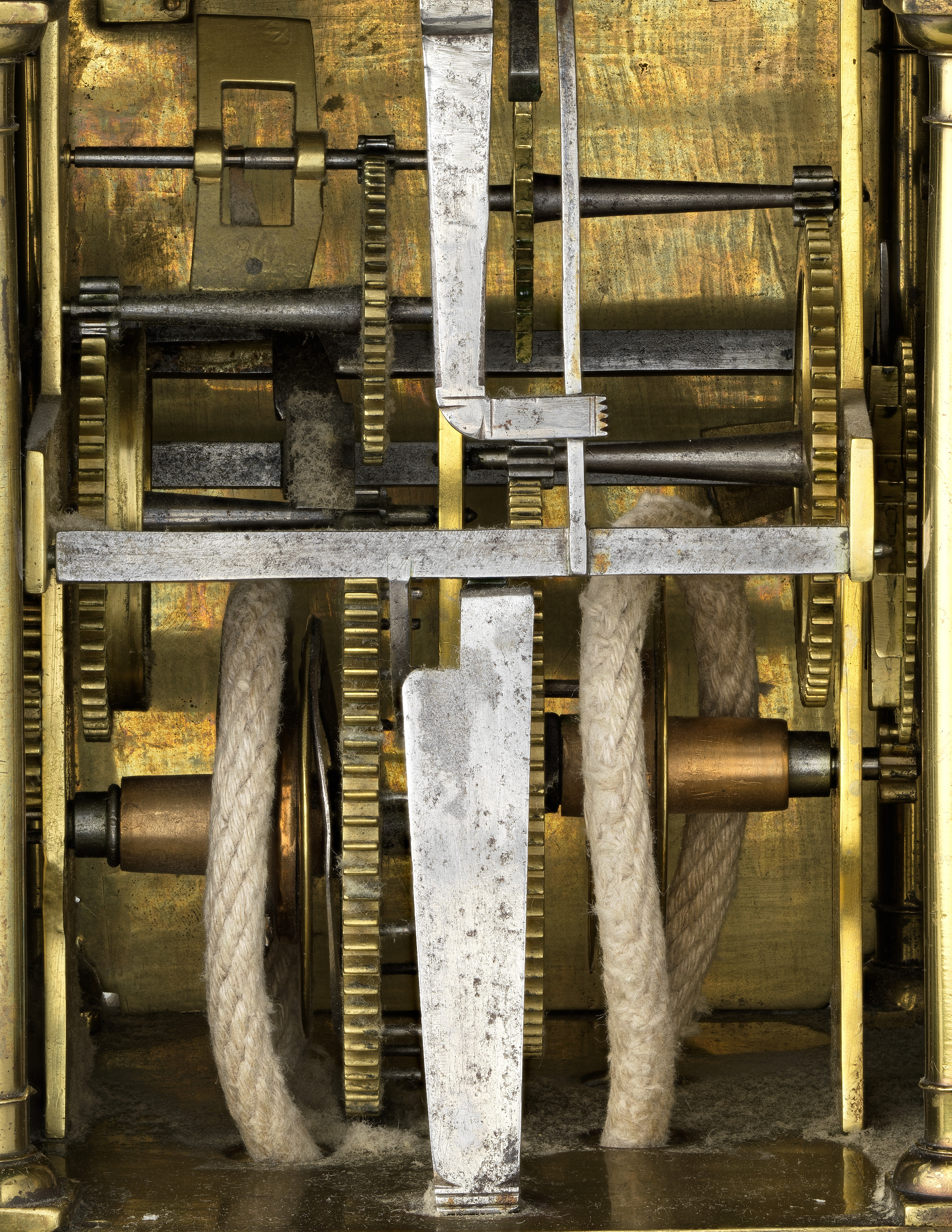Lantern clock
Peter Stretch American
As early as 1600, the lantern-clock form was the first type of household clock to be widely produced in Great Britain. While this clock was made in Leek, England, it alludes to the mindset of the artisan, Peter Stretch, just before he emigrated to Philadelphia in 1703 and disseminated British clockmaking design and technology in the region. Peter embraced recent scientific developments in clockmaking that provided more precise timekeeping, like the use of a longer pendulum, called anchor-recoil escapement, credited to British inventor Robert Hooke (1635-1703) and clockmaker Joseph Knibb (1640-1711).
Due to rights restrictions, this image cannot be enlarged, viewed at full screen, or downloaded.
This artwork is meant to be viewed from right to left. Scroll left to view more.






